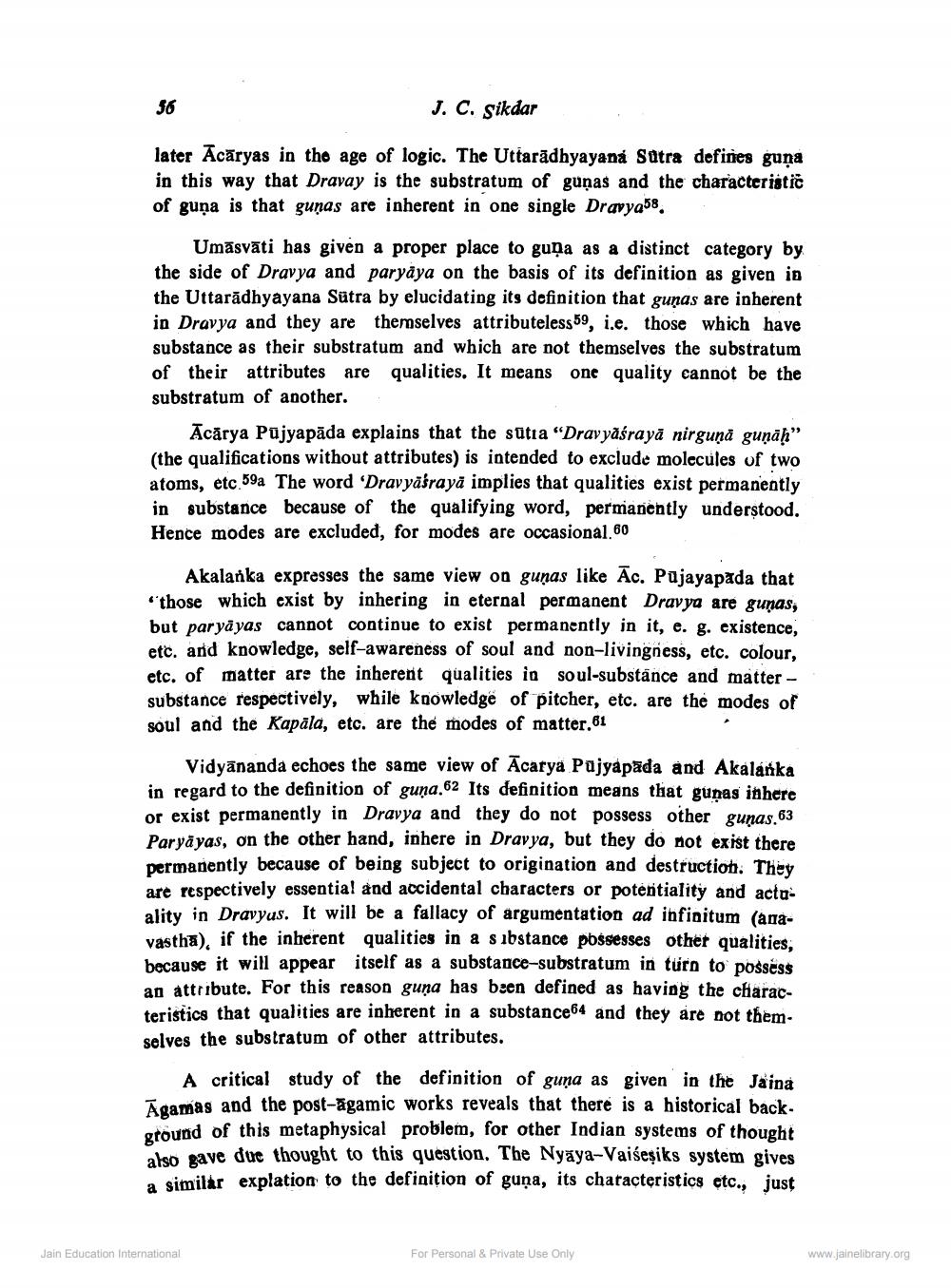________________
J. C. Sikdar
later Acaryas in the age of logic. The Uttaradhyayana Sutra defines guna in this way that Dravay is the substratum of gunas and the characteristic of guna is that gunas are inherent in one single Dravya58.
56
Umäsväti has given a proper place to guna as a distinct category by the side of Dravya and paryaya on the basis of its definition as given in the Uttaradhyayana Sutra by elucidating its definition that gunas are inherent in Dravya and they are themselves attributeless 59, i.e. those which have substance as their substratum and which are not themselves the substratum of their attributes are qualities. It means one quality cannot be the substratum of another.
Acarya Pujyapäda explains that the sutra "Dravyasraya nirguna guṇāḥ" (the qualifications without attributes) is intended to exclude molecules of two atoms, etc 59a The word 'Dravyairaya implies that qualities exist permanently in substance because of the qualifying word, permanently understood. Hence modes are excluded, for modes are occasional.00
Akalanka expresses the same view on gunas like Ac. Pujayapada that "those which exist by inhering in eternal permanent Dravya are gunas, but paryayas cannot continue to exist permanently in it, e. g. existence, etc, and knowledge, self-awareness of soul and non-livingness, etc. colour, etc. of matter are the inherent qualities in soul-substance and mattersubstance respectively, while knowledge of pitcher, etc. are the modes of soul and the Kapala, etc. are the modes of matter.61
Vidyananda echoes the same view of Acarya Pajyapada and Akalanka in regard to the definition of guna.62 Its definition means that gunas inhere or exist permanently in Dravya and they do not possess other gunas.63 Paryayas, on the other hand, inhere in Dravya, but they do not exist there permanently because of being subject to origination and destruction. They are respectively essential and accidental characters or potentiality and actuality in Dravyas. It will be a fallacy of argumentation ad infinitum (anavastha), if the inherent qualities in a substance possesses other qualities, because it will appear itself as a substance-substratum in turn to possess an attribute. For this reason guna has been defined as having the characteristics that qualities are inherent in a substance and they are not themselves the substratum of other attributes.
A critical study of the definition of guna as given in the Jaina Agamas and the post-agamic works reveals that there is a historical back. ground of this metaphysical problem, for other Indian systems of thought also gave due thought to this question. The Nyaya-Vaišeşiks system gives a similar explation to the definition of guna, its characteristics etc., just
Jain Education International
For Personal & Private Use Only
www.jainelibrary.org




